Recruitment in Norway

As in other occupied countries, recruitment efforts for the German armed forces were also undertaken in Norway. Organized by Quisling’s Nasjonal Samling party, several thousand Norwegians voluntarily joined the SS, while others formed various domestic collaborationist units. Only a small number enlisted in regular Wehrmacht forces. The Nazis sought to capitalize on available manpower by offering different forms of military service.
The Reichskommissariat and the Quisling government made multiple attempts to mobilize Norwegians for total mobilization. Recruitment for Germany’s military, primarily focused on the Waffen-SS, relied exclusively on volunteers and met with limited success. Consequently, only a small number of Norwegians ended up serving on the front lines.
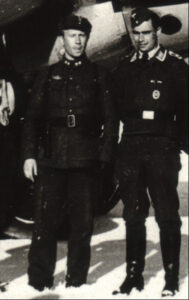
Germany conscripted individuals known as Volksdeutsche from German diaspora communities. While the number of such individuals in Norway was relatively small, some German families had immigrated there at the end of the 19th century. Fritjof Elffroth, born in Norway to German parents, had served as a mechanic in the Norwegian Army Air Service before the invasion. His comrades were taken aback when he appeared in a German Luftwaffe uniform shortly after being taken prisoner.
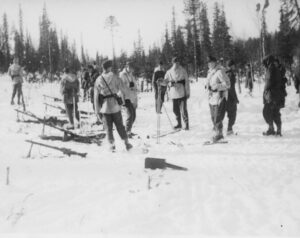
Approximately 4,500 Norwegians volunteered for Waffen-SS units on the Eastern Front. Of these, about 500 joined the Regiment Nordland in 1941, which later merged with the Norske Legion. Post-war justifications for their service often included anti-Bolshevism and solidarity with Finland following the Winter War of 1939–40. The Germanske SS Norge, established in 1942, had a more pronounced Nazi ideology. After the war, survivors were tried for treason but not for war crimes.
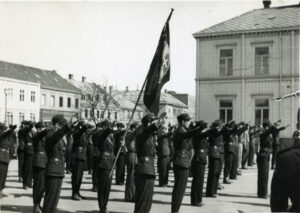
The Hird was the party militia of the Norwegian Nazi Party, Nasjonal Samling, and served as a recruitment pool for the SS and domestic collaboration. Of its approximately 20,000 members, around 8,000 were active. The Hird was organized into various sub-branches, including women’s and youth organizations, as well as guards tasked with protecting industry from sabotage. Members of the Hird also contributed to the formation of the SS-Wachtbataillon, which became infamous for its atrocities.
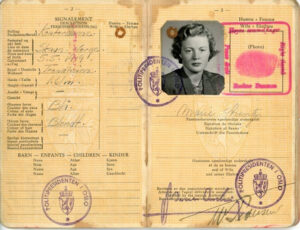
Approximately 1,000 Norwegian women joined the German Red Cross to serve on the Eastern Front, where they witnessed the brutal realities of war firsthand. After the war, they were convicted of treason, though their sentences were relatively light. While the Red Cross is traditionally seen as an impartial organization, the German branch was heavily Nazified and integrated into the Wehrmacht.
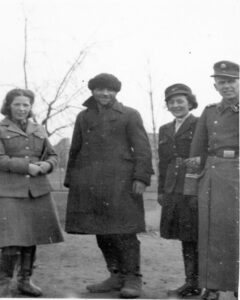
Of the approximately 100,000 POWs sent to Norway as forced labourers, the Wehrmacht recruited several as auxiliaries, known as HiWis (Hilfswillige). Additionally, around 300 Soviet POWs in Norway were recruited into the so-called Russian Liberation Army, led by former Red Army General Andrey Vlasov. These recruits fought for Germany on the Eastern Front.
NORWEGIAN VOLUNTEERS IN THE NAZI WAR MACHINE
During the occupation, approximately 6,000 Norwegians volunteered to serve in the German armed forces. Of these, 400 to 500 joined the Kriegsmarine, and 75 enlisted in the Luftwaffe. The majority, however, joined the Waffen-SS, with 3,600 Norwegians seeing combat on the front lines.
The recruitment of Norwegian volunteers for the Waffen-SS began in January 1941. They were assigned to Regiment Nordland, a unit created for Danish, Norwegian, and German recruits to give it a pan-Germanic image. The SS leadership hoped that Norwegian support for the campaign against the Soviet Union would foster a sense of shared Germanic heritage among the population and aimed to revive the ancient Viking warrior mentality. Furthermore, the SS anticipated that, after their service at the front, Norwegian soldiers would assume key roles in the administration and police of occupied Norway, thereby increasing SS influence in the country.
Quisling and the Nasjonal Samling were highly interested in recruitment for the Waffen-SS, seeing it as a way to solidify the party’s collaboration with the Germans. After the invasion of the Soviet Union, they spearheaded the creation of a new Waffen-SS unit, the Norwegian Legion (Den Norske Legio), which was to be exclusively staffed by Norwegians.
Quisling envisioned the unit as the foundation for a future army under his control, but in reality, the Legion remained a single battalion. The recruitment campaign tapped into Norwegian national sentiment, portraying the communist Soviet Union as the primary threat to Norway’s security. The propaganda also appealed to Norwegians‘ sympathy for the Finns, which had been strongly demonstrated during the Winter War of 1939–1940, and promised that the Legion would be deployed specifically in Finland.
In the initial recruitment round, 700 men enlisted, underwent training in Germany, and were ultimately deployed not to Finland, but to the Leningrad front in February 1942. By February/March 1943, a total of 2,300 Norwegians had joined the Legion before it was withdrawn from the front and subsequently disbanded. In addition to these units, a company was formed in July 1942, recruited from the Norwegian police, known as the 1st Police Company (1. politikompani), which was sent to the Leningrad front. Two more companies, established later, were deployed to the front in Finland.
The Regiment Nordland was withdrawn from the Eastern Front in April 1943, renamed, and incorporated into the newly formed 11th SS Volunteer Panzergrenadier Division “Nordland.” Despite the name, the Norwegian soldiers were mixed with recruits from other countries, and the command language was German. The regiment initially took part in anti-partisan operations in Yugoslavia before being transferred back to the Leningrad front in December 1943. From there, the unit’s campaign was defined by a series of retreats, eventually culminating in its participation in the final battles for Berlin in April/May 1945.
In the autumn of 1942, the Norwegian Volunteer Ski Company (Det norske frivillige skikompaniet) was established, consisting exclusively of Norwegian soldiers, and relocated to the front in Finland in April 1943. Later that year, it inspired the formation of a new Norwegian-manned ski unit, the SS Ski Hunter Battalion Norway (SS-Skijegerbataljon Norge), comprising over 600 soldiers, which was sent to the Karelian front in January 1944.
Despite suffering heavy losses, the battalion remained intact and followed the German retreat through Finland to Northern Norway in October and November 1944. Afterward, the unit was reinforced with German reserve policemen and reorganized as the SS and Police Ski Hunter Battalion 506 (SS- und Polizei Skijäger-Bataillon 506). This new battalion was deployed against resistance groups in Norway, marking the final German military unit specifically established for Norwegians during the war.
The majority of Norwegians who served in the German military were recruited from circles that sympathized with Nasjonal Samling and were motivated by ideological beliefs. In total, 852 of these volunteers were killed in action.
